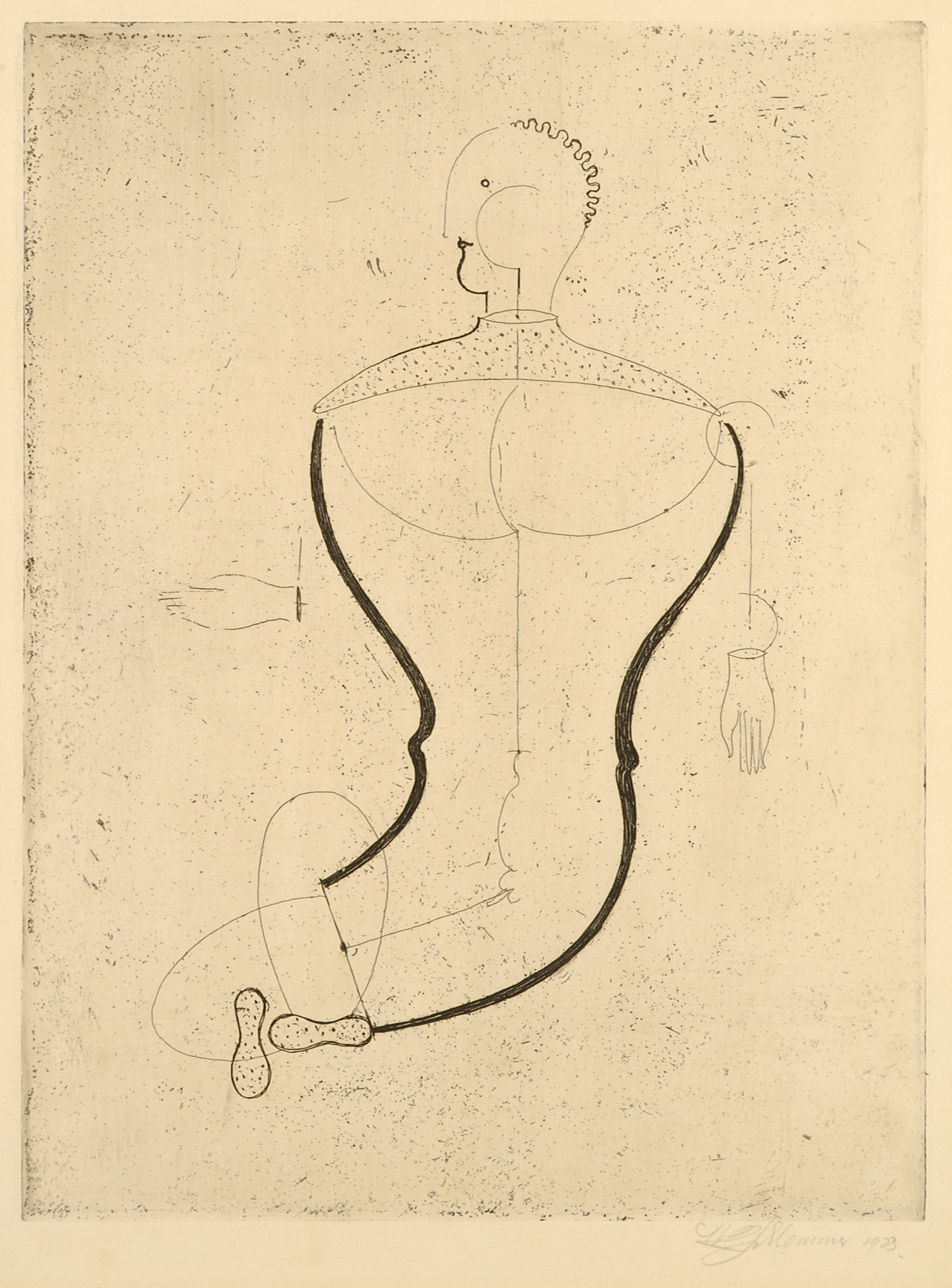Figure Facing Left, Oskar Schlemmer
Artwork Overview
Oskar Schlemmer, artist
1888–1943
Figure Facing Left,
1923
Portfolio/Series title: Meistermappe des Staatlichen Bauhauses - 1923 (Bauhaus Master Portfolio - 1923)
Where object was made: Germany
Material/technique: wove paper; etching
Dimensions:
Plate Mark/Block Dimensions (Height x Width): 313 x 237 mm
Sheet/Paper Dimensions (Height x Width): 400 x 313 mm
Plate Mark/Block Dimensions (Height x Width): 12 5/16 x 9 5/16 in
Sheet/Paper Dimensions (Height x Width): 15 3/4 x 12 5/16 in
Mat Dimensions (Height x Width): 19 x 14 in
Plate Mark/Block Dimensions (Height x Width): 313 x 237 mm
Sheet/Paper Dimensions (Height x Width): 400 x 313 mm
Plate Mark/Block Dimensions (Height x Width): 12 5/16 x 9 5/16 in
Sheet/Paper Dimensions (Height x Width): 15 3/4 x 12 5/16 in
Mat Dimensions (Height x Width): 19 x 14 in
Credit line: Museum purchase: Letha Churchill Walker Memorial Art Fund
Accession number: 1981.0131
Not on display
If you wish to reproduce this image, please submit an image request









